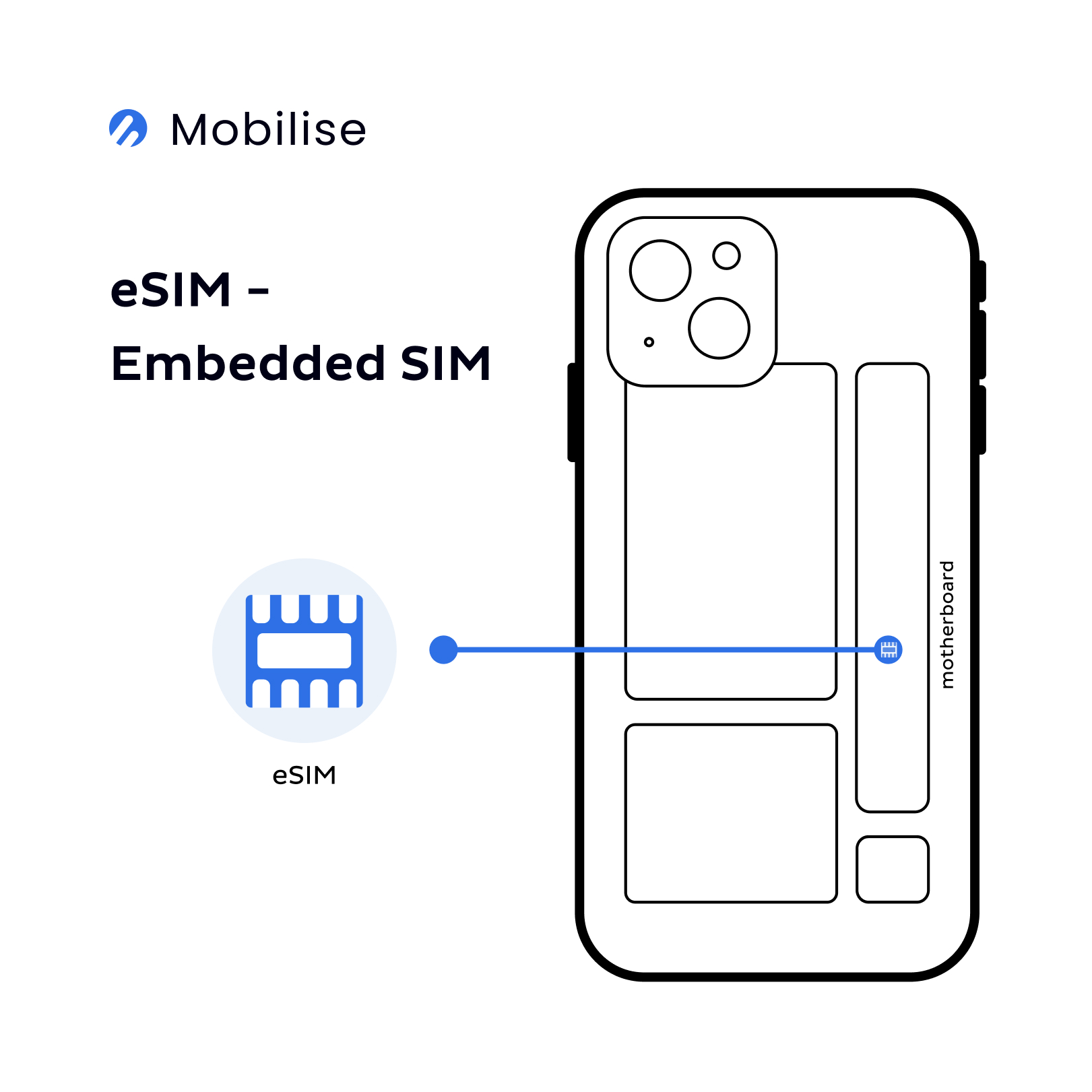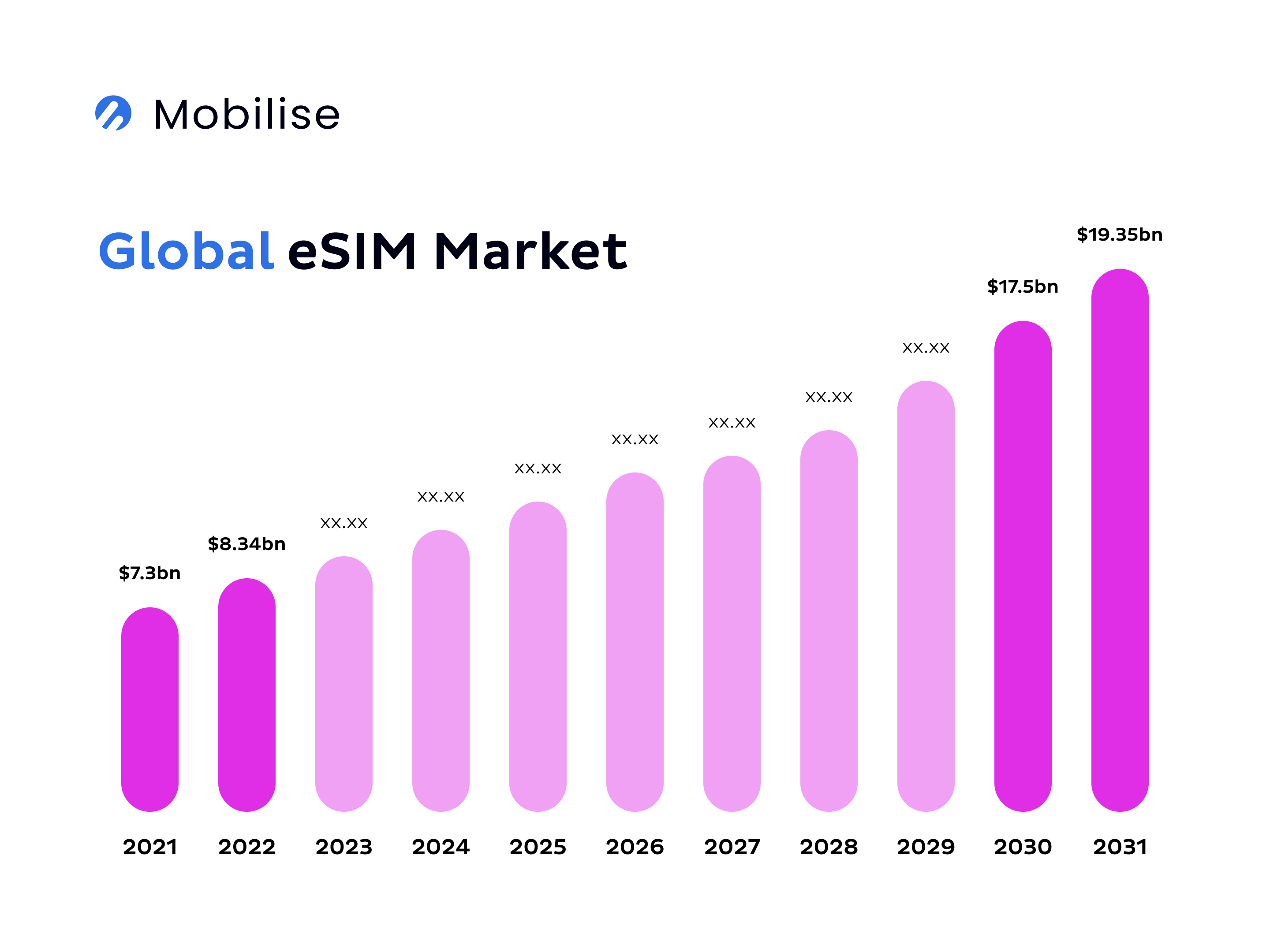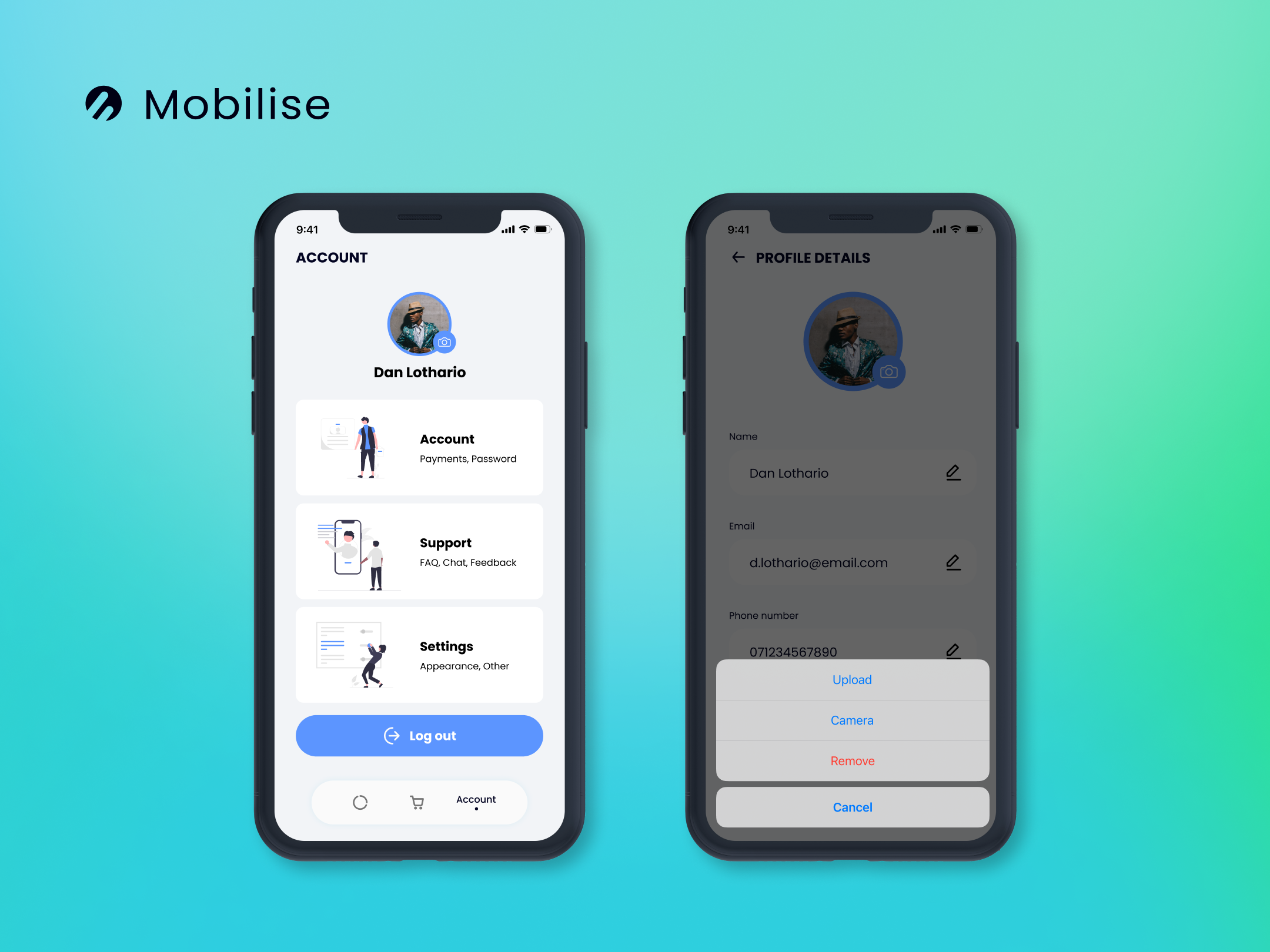Customer retention in telecom industry is paramount. With countless providers vying for consumer attention, keeping customers loyal is both a challenge and a necessity. Telecom companies face a myriad of obstacles, from high churn rates to intense competition, both from within the industry and external players. However, eSIMs present new opportunities to enhance customer retention, making it crucial for telecom operators to innovate continuously. In this blog, we’ll cover how to improve customer retention in telecom industry.
TL;DR
- Customer retention is critical in telecom industry due to intense competition and high churn rates.
- Key strategies for improving retention include:
- Personalisation of Services
- Enhanced Customer Support
- Adoption of eSIM Technology
- Loyalty and Rewards Programs
- Targeted Communication
- Value-Added Services
- Educational Campaigns
- Quality Network Performance
- Feedback Mechanisms
- Community Engagement
What is Customer Retention in Telecom?
Customer retention is essential for businesses in all industries, including telecoms. It refers to a company’s ability to maintain its customer base over a prolonged period rather than losing them to competitors.
In telecoms, customer retention involves implementing strategies to ensure that subscribers continue using the services provided by their current provider instead of switching to a different company. This typically involves providing high-quality service, addressing customer needs, and delivering value to subscribers.
Customer retention is a critical metric for telecom companies. It reflects the overall customer satisfaction and the effectiveness of the company’s service offerings. By focusing on customer retention, telecom companies can build long-term relationships with their subscribers, reduce customer turnover, and ultimately drive business growth.
Why is Customer Retention in Telecom Important?
Following a Harvard Business Review article, it’s 5-25x more expensive to acquire a new customer than retaining an existing one. High retention rates indicate satisfied customers are likely to recommend the service to others, thus driving organic growth. Additionally, long-term customers provide more revenue over time, making retention a key driver of profitability.
What’s the Current Customer Retention Like in Telecom?
Currently, the telecom industry faces significant challenges with customer retention. High churn rates are common due to fierce competition and the rise of alternative options like travel eSIMs in an age of digitalisation in telecom.
On top of this, the most recent data from an noted that 8 million UK households continue to have difficulty affording communications services. It’s clear that with a cost-of-living crisis, it heavily impacts telecoms services and their customer retention rate as consumers have less disposable income to spend on OTT services.
According to Exploding Topics, the average customer retention rate for the telecoms industry is at 78%. The high rate is likely linked to long-term contracts and customer loyalty incentives which makes switching more difficult for consumers.
 Source: Exploding Topics
Source: Exploding Topics
How to improve customer retention in telecom?
There are multiple different strategies and ways for service providers (SPs) to improve their customer retention rate.
Personalisation of Services
Utilising big data analytics for telecom and AI allows SPs to gain insights into individual customer needs and preferences. By analysing customer data, companies can tailor their offers and packages to match user consumption patterns.
This level of personalisation can lead to highly targeted and effective marketing campaigns, resulting in increased customer retention rates. 84% of consumers prefer a more individual approach; otherwise, they are more likely to churn. Businesses can use personalised marketing strategies to create a more engaging and individualised experience for their customers, ultimately leading to higher customer satisfaction and loyalty.
One example of a highly effective use of personalisation is Spotify Wrapped, an annual compilation of data about users’ activity on the platform. In 2021, Spotify reported that 120 million users accessed their Wrapped. And the engagement consists of more than just access, as 60 million users actively shared their Wrapped graphics on social media. These impressive figures highlight the campaign’s effectiveness in fostering user participation and retention.
 Source: DotDigital
Source: DotDigital
Enhanced Customer Support
The importance of quick and efficient customer service in telecom industry can’t be understated. Customers expect to have their issues addressed promptly and professionally.
The consequences of poor customer experience design in telecom are never felt in isolation. A customer dissatisfied with one product or service becomes, in time, dissatisfied with the brand. In fact, only 1 in 26 unhappy customers actually complain. The rest, just leave.

Implementing 24/7 support via multiple channels such as phone, email, and live chat is crucial in meeting these expectations. This ensures that customers can reach out for assistance at any time that’s convenient for them.
Training staff to handle inquiries and problems effectively and empathetically is also essential. They need to not only have the technical know-how to solve problems but also the interpersonal skills to understand and empathise with the customer’s concerns. This can significantly improve telecom customer experience and loyalty.
Adoption of eSIM Technology
So, what is an eSIM and how does it work? An eSIM, also known as an embedded SIM, is a small chip embedded within a device. Unlike plastic SIM cards, eSIM allows users to switch between mobile networks seamlessly without physically swapping SIM cards. Unlike traditional physical SIM cards that are removable, consumer eSIM is integrated into the device’s hardware and can’t be physically removed or swapped.
Additionally, eSIM eliminates the need for a SIM card slot, thus saving space within the device for other components. It also reduces the risk of damage to the SIM card and the need for a SIM card tray.

eSIM simplifies the process of signing up for a new cellular plan. Users can simply activate a plan with a few taps on their device without needing to wait for a physical SIM card to arrive in the mail. This is especially helpful when travelling, as users can easily connect to local networks without having to visit a carrier store or purchase a temporary SIM card. Additionally, eSIM enables seamless connectivity across the globe, making it easier for users to stay connected when travelling internationally.
eSIM is expected to become the norm, and the figures only support this. The global size of the eSIM market was approximately USD 7.3 billion in 2021 and USD 8.34 billion in 2022. It’s estimated to reach USD 17.5 billion by 2030 and USD 19.35 billion by 2031.
 Source: Mobilise, based on Straits Research
Source: Mobilise, based on Straits Research
Several telecom operators have embraced eSIM technology and have successfully integrated it into their offerings. For example, a few of our own clients, such as Manx (OV) and Degoo, have started to provide eSIM-compatible plans, allowing users to take advantage of the benefits of eSIM. Implementing the technology can help telcos retain their customers by offering a more innovative and attractive service than competitors. One that is flexible, convenient, and offers global connectivity.
RECOMMENDED READING
Loyalty and Rewards Programs
When it comes to loyalty and rewards programs, it’s essential to design incentives that encourage long-term loyalty among customers. This will lead to increased customer retention and the average revenue per user (ARPU). One effective way to achieve this is by offering tiered benefits that cater to different levels of spending. By doing so, you can provide an incentive for customers to increase their spending in order to unlock greater rewards.
 Source: Antavo
Source: Antavo
A well-designed rewards or loyalty program can play a crucial role in fostering long-term customer loyalty . In fact, according to BCG, the top performing loyalty programs see a 78% increase in engagement, 46% increase in loyalty and a 51% boost in spending. By understanding the principles of effective program design, telcos can create rewards programs that not only strengthen customer retention but also increase ARPU in telecom.
 Source: BCG
Source: BCG
Targeted Communication
Effective customer retention in the telecom industry hinges on the ability to communicate strategically with your audience. Targeted communication involves crafting messages specifically tailored to various customer segments based on their preferences, behaviours, and demographics. By understanding and addressing your audience’s unique needs, you can foster stronger connections and enhance customer satisfaction.
The Importance of Targeted Communication
Targeted communication is essential for customer retention as it builds deeper relationships with your customer base. When customers receive messages that resonate with their specific situations and needs, they feel valued and understood. This personalised approach not only boosts engagement but also reinforces customer loyalty, encouraging repeat business and long-term commitment to your brand.
Leveraging Customer Data for Personalisation
Utilising customer data such as past purchases, browsing history, and demographic information allows for highly personalised communication. By leveraging this data, telecom companies can recommend relevant products or services, increasing the likelihood of conversion and customer satisfaction. Personalised updates and offers make customers feel recognised and appreciated, further strengthening their loyalty to the brand.

Strategies for Effective Communication
Maintaining an engaging communication strategy involves several key practices:
- Understanding Your Audience: Continuously gather and analyse customer data to stay informed about their preferences and behaviours.
- Testing and Optimisation: Regularly test different communication approaches and optimise your messaging based on performance data to ensure relevance and effectiveness.
- Relevance and Timing: Ensure that all communications are timely and valuable to the recipient. Sending relevant information at the right time can significantly enhance customer engagement.
- Interactive Content and Feedback: Incorporate interactive content such as surveys, polls, and quizzes to engage customers actively. Additionally, seeking feedback helps to refine your communication strategy and address any areas of improvement.
By focusing on these strategies, telcos can enhance their customer retention efforts through more meaningful and effective communication. Building strong, personalised connections with customers not only improves satisfaction but also drives long-term loyalty and business success.

Value-Added Services
Value-added services (VAS) play a crucial role in enhancing customer experience and fostering loyalty. VAS refers to additional services beyond standard voice and data communication that telecom operators offer to enhance their customers’ experience and provide added value. By offering a range of additional services, companies can significantly improve customer satisfaction and retention, while differentiating from their competitors.
Bundling Services for Greater Convenience and Savings
One effective approach is to offer bundled services, combining core services with ancillary services, such as subscriptions to video or audio over-the-top services like Spotify or Netflix. This not only provides customers with better prices but also greater convenience. Managing multiple utilities under a single provider simplifies their experience and can lead to potential cost savings. Bundling services helps create a seamless and integrated customer experience, encouraging long-term loyalty.
Beyond Core Offerings: Personalised Value-Added Services
VAS extends beyond core products, incorporating a variety of offerings that enhance customer satisfaction. Examples include:
- Personalised Customer Support: Providing tailored support that addresses individual customer needs can significantly improve their experience and loyalty.
- Extended Warranties: Offering extended warranties on devices and services assures customers of long-term support and reliability.
- Loyalty Rewards Programmes: Implementing programmes that reward customers for their continued patronage encourages repeat business and enhances customer retention.
- Exclusive Access: Providing exclusive access to events, promotions, or early product releases can make customers feel valued and appreciated.
Differentiating Through Value-Added Services
Implementing these value-added services not only increases customer stickiness but also differentiates the company from its competitors. By delivering a superior and personalised customer experience, telecom companies can stand out in a crowded market.
An example of a value-added service successfully being implemented is Revolut’s eSIM plans. Revolut became the first financial institution in the UK to launch eSIM. The British neobank offers an affordable solution for accessing data plans across more than 100 countries without incurring unexpected roaming charges. UK customers can now install an eSIM via the Revolut app, easily topping up as needed. It works alongside a physical SIM, which is perfect for frequent travellers.

Value-added services are a powerful tool for enhancing customer retention in telecom industry. By offering bundled services, personalised support, and exclusive rewards, companies can create a compelling value proposition that attracts and retains customers, ultimately driving long-term success.
Educational Campaigns
Launching educational campaigns is essential for informing customers about new technologies and services. By providing detailed information, tutorials, and guides, businesses can help customers understand the benefits and functionalities of their products or services. These campaigns also address common misconceptions and highlight the unique selling points of the offerings.
Building Trust and Reducing Churn
Educational content plays a pivotal role in building trust with customers. When businesses demonstrate a commitment to educating their customers, it creates a sense of transparency and reliability. Well-informed customers are more likely to recognise the value of the offerings and are less likely to churn since they understand how to derive maximum benefits from the products or services.
Types of Educational Materials and Platforms
Telcos can utilise various types of educational materials, such as videos, infographics, blog posts, webinars, and interactive modules, to effectively convey information to their audience. Leveraging platforms such as social media, email newsletters, dedicated website sections, and online learning portals can amplify the reach of educational campaigns and engage a wider audience with diverse learning preferences.
Educational campaigns are a powerful tool for customer retention in the telecom industry. By providing valuable information and fostering a deeper understanding of their offerings, businesses can build trust, reduce churn, and enhance customer satisfaction.
Quality Network Performance
Reliable and fast network performance is a fundamental expectation of customers in telecoms. Poor network quality can lead to frustration and significantly impact retention rates, as unsatisfactory service often prompts customers to switch to competitors.
Strategies for Maintaining and Improving Network Reliability
To ensure network reliability, telecom companies must invest in robust infrastructure, conduct regular maintenance, and stay abreast of the latest technological advancements. Proactive monitoring and addressing potential issues before they affect customers are crucial steps in maintaining a reliable network. By doing so, companies can minimise disruptions and enhance overall customer satisfaction.
An article from Ericsson and Swisscom supports this. It found that network improvements resulted in an 11 percentage point increase in willingness to refer the network to others.
Effective Communication of Network Upgrades
Communicating network upgrades and their benefits to customers is essential for managing expectations and demonstrating the value of these enhancements. Clear and transparent communication can be achieved through various channels such as email, SMS, social media, and customer support interactions. It is vital to emphasise how the network upgrades will positively impact the customer experience, whether through faster data speeds, improved coverage, or additional services.
The quality of a telecom network is directly linked to customer satisfaction and retention. By investing in infrastructure, staying updated with technological advancements, and effectively communicating improvements, telecom companies can ensure a reliable service that meets customer expectations and fosters loyalty.
Feedback Mechanisms
Establishing efficient systems for collecting and analysing customer feedback is crucial. By setting up user-friendly feedback channels, such as surveys, suggestion boxes, and direct contact points, we can encourage customers to share their opinions and experiences with our services. Ensuring that the feedback collection process is streamlined and accessible to all customers is equally important.
Implementing Feedback for Data-Driven Decisions
Once customer feedback is collected, it is essential to use this valuable data to make informed decisions aimed at enhancing our services. By analysing feedback trends and identifying common pain points or areas for improvement, telcos can prioritise changes that will have the most significant impact on service quality. This approach ensures that the efforts are focused on what matters most to their customers.
Effective feedback mechanisms, data-driven decision-making, and service improvements are key strategies for retaining customers in the telecom industry. By prioritising customer feedback and demonstrating responsiveness, telcos can foster long-term loyalty and satisfaction.
Community Engagement
When it comes to community engagement, it’s all about creating a sense of belonging and connection among users. In fact, online communities can help organisations improve engagement by up to 21% (Higher Logic).
One effective way to achieve this is by organising events and forums where people can come together to share ideas, ask questions, and foster meaningful relationships. Through these interactions, users feel valued and are more likely to develop a strong connection with the brand or platform.
Having an active online community provides numerous benefits, such as obtaining valuable feedback and offering support to users. This feedback is crucial for businesses and organisations looking to improve their products or services based on real user experiences and preferences. Additionally, providing support within the community helps build trust and loyalty among users, as they feel their concerns are being heard and addressed.
 Source: The giffgaff community forum
Source: The giffgaff community forum
An engaged community can significantly contribute to increased brand loyalty and customer retention. When users feel connected to a community, they are more likely to remain active and engaged with the brand or platform. This sense of belonging and support can lead to long-term relationships with the brand, resulting in higher customer retention rates and ultimately driving business success.
How Can Mobilise Help Improve Customer Retention in Telecom?
Mobilise offers a suite of solutions called HERO, designed to enhance customer retention by providing a comprehensive customer experience platform for telecom. By leveraging advanced analytics, personalised marketing tools, and state-of-the-art customer service platforms, we enable telecom operators to deliver exceptional experiences that keep customers loyal.

Our expertise in eSIM integration and loyalty programme design ensures that operators can stay ahead in a competitive market. Mobilise’s solutions not only help in understanding customer behaviours and preferences but also in creating tailored experiences that meet individual needs. This holistic approach to customer experience management is vital for maintaining and growing a loyal customer base.
Conclusion
To succeed, a proactive approach to customer retention in telecom industry is essential. By personalising services, enhancing support, adopting new technologies like eSIM, and fostering community engagement, telcos can significantly improve retention rates. Continuous innovation and adaptation to changing customer expectations and technological advancements are key to long-term success.



